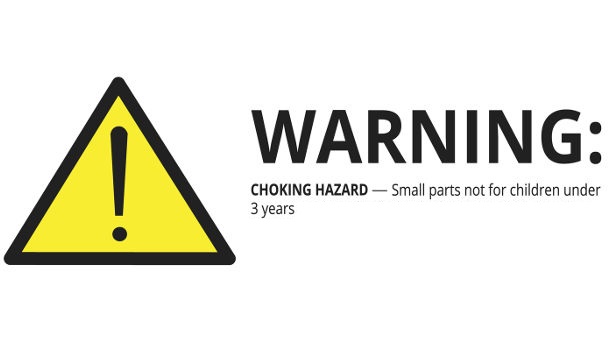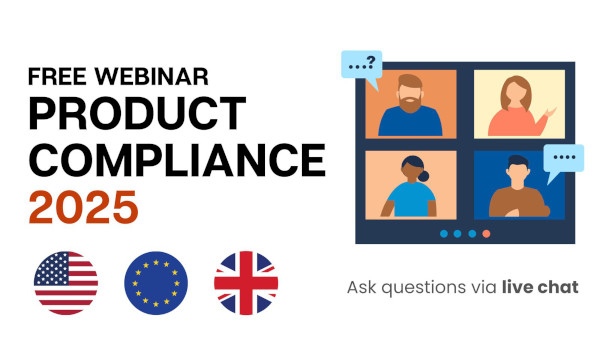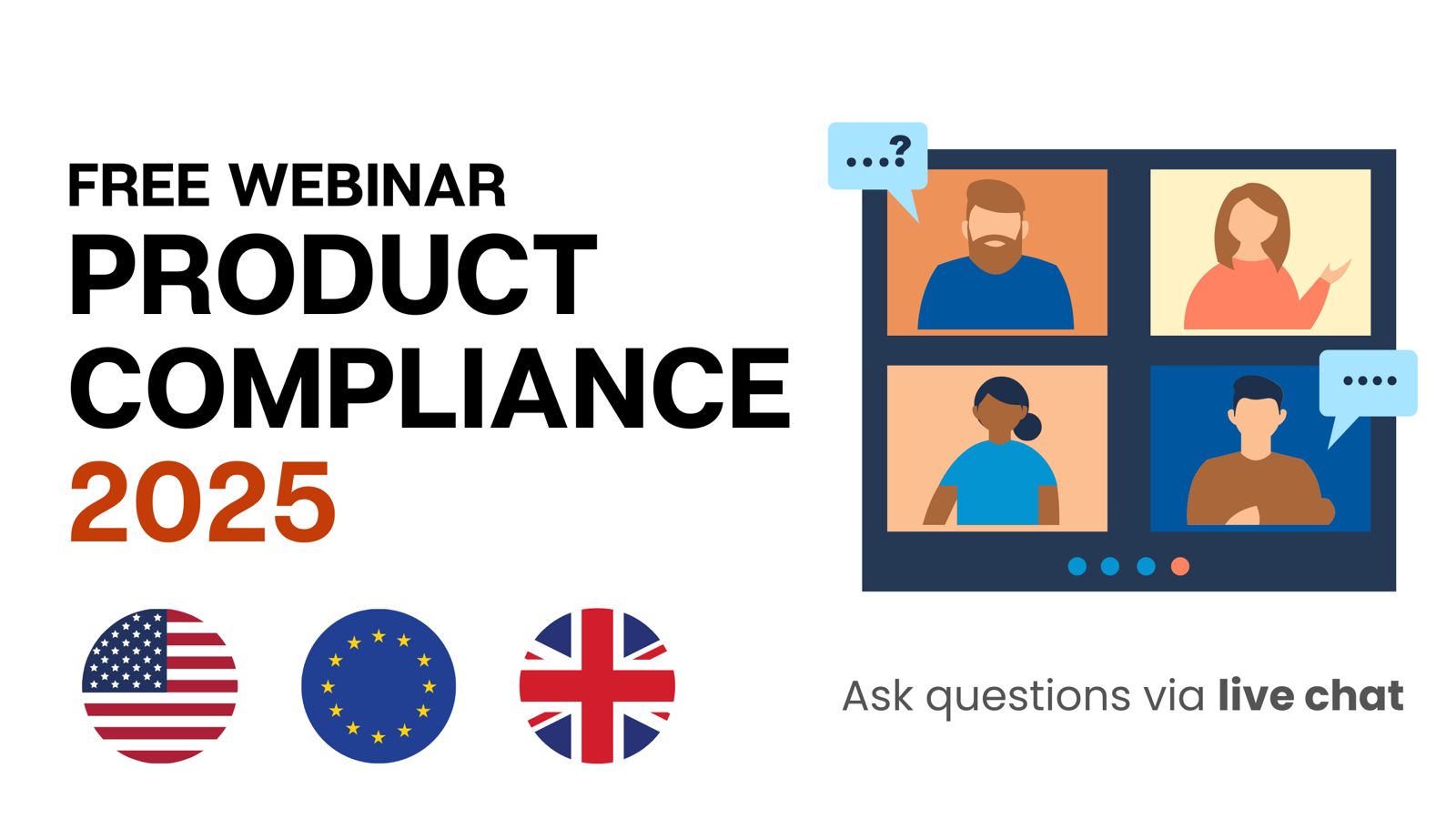Warnings texts and symbols are mandatory for certain toys and other children’s products sold in the United States. The main purpose of warning labeling is to inform parents and other care givers of potential risks, which can involve everything from small parts warnings to more specific hazards.
In this guide, we take a closer look at the various types of warning texts and symbols applicable to toys and other children’s products in the United States.
Methodology: The different types of warning labels and product examples featured in this guide are retrieved from the Consumer Product Safety Commission’s published guidance documents, Code of Federal Regulation (CFR) pages, and public ASTM standard pages. Note that more warning label types may exist. Further, we do not have access to ASTM standards – which may also contain additional warning labels.
Content Overview

FREE CONSULTATION CALL (US, EU & UK)
- Request a free 30-minute call with Ivan Malloci to learn how we can help you with:
- Find product requirements
- Certification and labeling
- Lab testing
Which children’s products require warning labeling in the US?
Here are some examples of children product’s that require a warning label:
- Products with small parts
- Toys with functional sharp edges or points
- Pacifiers
- Small balls
- Products with coin and button cell batteries
- Marbles
- Latex balloons
- Baby monitors
- Full-size baby cribs
- Soft infant and toddler carriers
Many standards and regulations under the Consumer Product Safety Improvement Act (CPSIA) set specific warning labels for children’s products. For example, 16 CFR Part 1511 requires pacifiers to feature a strangulation warning.
Additionally, ASTM standards and other types of standards can also feature warning labeling requirements for specific children’s products. Oftentimes, these standards are incorporated into regulations and thus mandatory. Even when this is not the case, and thus such standards are voluntary in theory, you should still follow them to ensure product safety.

Choking Hazard Warnings
16 CFR Part 1500 requires that children’s products that are small balls, latex balloons, marbles, or toys or games containing small parts, should bear a choking hazard warning label. This is to prevent the risk of young children choking due to the ingestion of either small products or products that contain removable or detachable small parts.
Further, the prohibited age range should be suggested in the choking warning text as well, such as “Not for under 3 years” or “Not for under 8 years”.
Product examples
Choking hazard warning labels are mandatory for children’s products that contain small parts (e.g. small accessories, detachable parts) and that are designed for children not under 3 years of age.
Here are some examples of products that require the warning:
- Latex balloon
- Marbles used in children’s games
- Small balls
- Toys or games including small parts
For some specific products, such as balloons, the warning concerns kids up to 8 years old.
Warning examples
16 CFR Part 1500.20 provides specific choking hazard warning labels. Here are some examples:
“WARNING: CHOKING HAZARD – Small parts. Not for children under 3 yrs.”
“WARNING: CHOKING HAZARD – Children under 8 yrs. can choke or suffocate on uninflated or broken balloons. Adult supervision required.
Keep uninflated balloons from children. Discard broken balloons at once.”
Strangulation Hazard Warnings
These warnings are for products that carry with them the risk of strangulation. Warning labels must be provided so that caregivers know how to safely use such products.
For example, baby cribs may come with strings and cords that may strangle the child’s neck. According to the CPSC’s Full-Size Baby Cribs Business Guidance page, such products should come with a strangulation hazard warning.
Note that 16 CFR Part 1219 – Safety Standard for Full-Size Baby Cribs incorporates by reference ASTM F1169 – Standard Consumer Safety Specification for Full-Size Baby Cribs. The ASTM website’s standard page mentions that ASTM F1169 sets requirements for warning labels. However, it does not go into detail on the specific warnings.
Product examples
Here are some examples of products that require the warning:
- Pacifiers
- Full-size baby cribs
- Baby monitors
Warning example
For example, 16 CFR Part 1511.7 provides a strangulation hazard warning for pacifiers:
“Warning—Do Not Tie Pacifier Around Child’s Neck as it Presents a Strangulation Danger.”
Suffocation Hazard Warnings
These types of warnings are designed to address risks associated with suffocation to promote the safe use of the product. Typically, products for young infants would require such warnings.
For example, a child in a soft infant and toddler carrier facing the wearer may suffocate if there is no steady flow of air. According to the CPSC’s Soft Infant and Toddler Carriers Business Guidance page, a suffocation hazard warning is required to alert caregivers.
Product examples
We found that soft infant and toddler carriers require a suffocation hazard warning.
Fall Hazard Warnings
These warnings are typically for products that have children elevated above ground level. As certain products are designed for young children, they would sustain serious injuries if they fall from such products.
This is the case, for example, of baby cribs. If the caregiver is not careful, the child may fall from the crib and suffer minor to severe physical injuries. According to the CPSC’s Full-Size Baby Cribs Business Guidance page, such products should come with fall hazard warnings.
As explained in the section concerning strangulation hazard warnings, 16 CFR Part 1219 incorporates by reference ASTM F1169 which contains warning label requirements for full-size baby cribs.
Product examples
Here are examples of products requiring the warning:
- Full-size baby cribs
- Soft Infant and toddler carriers
Sharp Edge Hazard Warnings
These are warnings for products that have sharp edges. For example, toys with sharp edges may cause physical injuries to children ranging from minor scratches to severe cuts. According to the CPSC’s Toy Safety Business Guidance page, such products must come with sharp-edge hazard warnings.
Note that 16 CFR Part 1250 – Safety Standard Mandating ASTM F963 for Toys incorporates by reference ASTM F963 – Standard Consumer Safety Specification for Toy Safety. The ASTM website’s standard page mentions that ASTM F963 sets labeling requirements concerning functional hazards and the intended age range for the toy.
Product examples
Toys with functional sharp edges or points require a warning.
Swallowing Hazard Warnings
These are warnings for products that are dangerous when it or its parts are swallowed. For example, coin batteries may be fatal if ingested.
Young children tend to put objects in their mouths. Thus, products or their parts that are dangerous when consumed must come with warning labels so that the caregiver is cautioned. For example, 16 CFR Part 1263 requires products containing button cell batteries or coin batteries to come with a warning.
Product examples
Here are some examples of products requiring the warning:
- Products containing button cell batteries
- Products containing coin batteries
Should the warning text be printed on the product or the packaging?
The placement of the warning label varies depending on the source of the requirement (e.g. regulations or standards).
For example, under 16 CFR Part 1500.19 on misbranded toys and other articles intended for use by children, products with small parts are seen as misbranded hazardous substances if the warning does not comply with the prominence and conspicuousness requirements of 16 CFR Part 1500.19(d) and is not featured properly in the following areas:
- Its packaging
- Any descriptive material that accompanies them
- Any bin in which they are held for sale (if unpackaged and unlabeled)
- Any container in which they are held for retail display
- Any vending machine from which they are dispensed
Misbranded toys and children’s articles. Pursuant to sections 2(p) and 24 of the FHSA, the following articles are misbranded hazardous substances if their packaging, any descriptive material that accompanies them, and, if unpackaged and unlabeled, any bin in which they are held for sale, any container in which they are held for retail display, or any vending machine from which they are dispensed, fails to bear the labeling statements required in paragraphs (b) (1) through (4) and paragraph (f)(3) of this section, or if such labeling statements fail to comply with the prominence and conspicuousness requirements of paragraph (d) of this section.
How do I make sure that my product is correctly labeled?
First of all, you need to assess all applicable warning labels for your product and the packaging. This guide only serves as an introduction, and the examples may be outdated. As such, getting help from a consultant or other service provider is the first step.
Second, create ready-to-print label files (usually .ai or .eps) and send the files to your supplier. Never assume that your manufacturer is aware of warning labeling requirements in the United States. In fact, most of them are not, especially when it comes to overseas manufacturers.

















Is it a requirement for plush toys to have a label indicating age that toy has been tested for. All ages or 3+
Where multiple warnings are applicable to a product, are you allowed to run them together in one ‘Warning Box’?
I would like to have a conversation about my product. We are launching a sponge type product ( not a toy) for use in Hot tubs by adults that absorbs the oil and lotions in the water. These sponges are in the shape of fish. See an opportunity to move this product into the toy market as a plush toy. I need help with necessary compliance requirements.
Please let me know if we can talk.
Regards,
Mark Henderson
Hello,
Can you confirm if ‘Small Parts Choking Hazard Warning’ are legally required on products that are not classified as children’s products under CPSIA? For example, if a paper Christmas Gift Bag includes a single decorative non-functioning 15mm bell or a single decorative 15mm rhinestone, is a small parts warning required on the product packaging?
After lots of research and reading, I am unable to find any specific direction, statement, or verification that small parts warnings are not required for non-children’s products.
Thank you.
Hi Gena you’re right. Warning labels must be on immediate packaging.
I have a question. I work for major retailer in the USA. We are told to reboot a children’s toy in a plan brown box without the warning labels or choke hazard for children’s toy. I was wondering if this is right? To me I don’t feel right because to the warning labels are there for a reason. Plus I’m a parent to and I would like to know when I buy something what precautions I have to take.